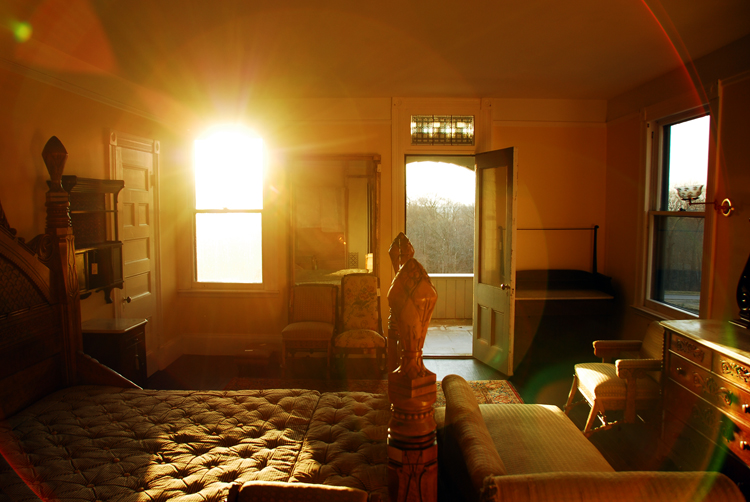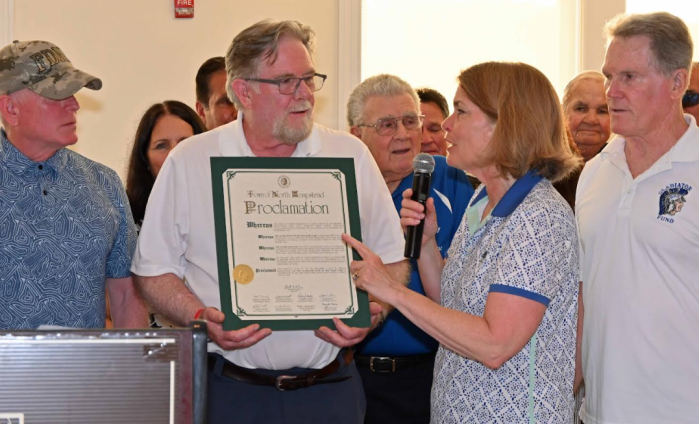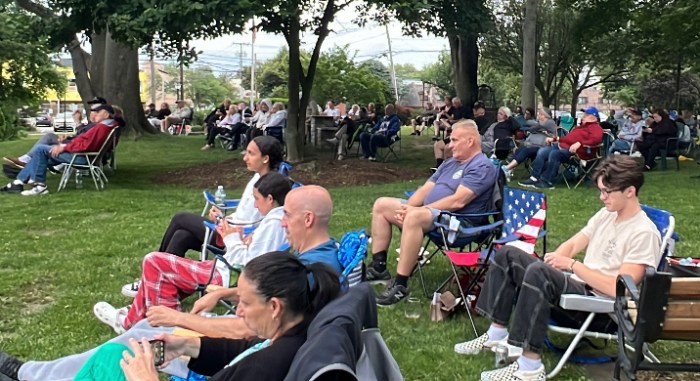Thanks to a special arrangement with the U.S. National Park Service, Long Island-based photographer Xiomaro got an unusual look inside Sagamore Hill, President Theodore Roosevelt’s historic home in Oyster Bay, as it was about to undergo its multi-million-dollar renovation. He was given free rein to photograph these rooms stripped bare of many of the most significant items belonging to the 26th president and his family that generations of tourists have grown accustomed to seeing there.
The result is a provocative exhibition called “Theodore Roosevelt’s Sagamore Hill: The ‘Unseen’ Summer White House,” featuring more than 40 large, color photographs that will be shown for two weeks at the Theodore Roosevelt Executive and Legislative Building in Mineola from Oct 13-Oct. 23, where TR himself laid the cornerstone in 1900 when he was then governor of New York.
This special show grew out of a collaboration with Nassau County Comptroller George Maragos, County Executive Ed Mangano and the National Park Service’s Sagamore Hill National Historic Site, which had commissioned Xiomara to photograph the rooms in their original condition before the $10-million restoration kicked into full gear, closing the house for three years.
“When everything’s removed it’s like a whole different experience,” said Xio (pronounced “See-oh). “Even when you remove the contents there is still something about the occupants imprinted within the rooms.”
He didn’t want to produce a straight documentary record of the before and after but impart something more evocative and nuanced.
“The easiest thing for me to do would be to focus on TR himself, since he’s such a larger than life personality,” he told the Press. “I chose to have the photographs convey something about the entire household that would include the first lady, the children, and even the servants.”
One shot he took shows the letter E carved crudely into the doorjamb of the library where TR had his study. “It was carved there by Archie,” said Xio, referring to one of TR’s sons. “He did it to get his sister Edith into trouble because they would think that she did it!”
Before photographing Sagamore Hill, Xiomara had done a similar project for the U.S. National Park Service at the Weir Farm National Historic Site in Wilton, Conn., where one of the founders of American Impressionism, Julian Alden Weir, had lived for 37 years. His homestead was getting a much-needed restoration for the first time in more than a hundred years. Park officials at Sagamore Hill saw what he’d done at the Weir site and wanted him to take the same approach. But he had to act fast.
“They had already started to board up some of the fireplaces and I wanted to photograph that,” he said.
And so it came to be one cold wintery afternoon in 2012 that he found himself upstairs at the mansion “alone with TR’s deathbed at the end of the day,” he recalled recently, saying the experience of being in that room as the sun was setting and shooting the same bed where the president had died in 1919 gave him the heebie-jeebies. “I did feel that sense of a presence in my mind, and that’s what I was trying to get across.”
That photo was included in the exhibit’s debut at the Oyster Bay Historical Society in 2013 and shown a year later at the Theodore Roosevelt Gallery in the Pusey Library at Harvard University, which has a collection of TR’s papers. There TR’s great-grandson, Tweed Roosevelt, asked Xio to take a photograph of the restored bedroom from the same angle for a special commemorative edition of The Theodore Roosevelt Association Journal, which was already going to feature Xio’s essays and photos.
So in July Xio was able to retake the photo from the same angle about 15 minutes before the public was allowed into the fully restored Sagamore Hill.
“It’s really interesting to see the difference in color because in the morning it’s bluer,” he said. At the official re-opening, he ran into Maragos, whom he’d met earlier this year in Mineola when the comptroller was hosting an art show, “Women of the World,” and he’d been one of the judges of the entries.
“I reminded him that we’d met, and I said that I wanted to do this exhibit,” said Xio. “He gave me his card and told me to email him. That same day, within 45 minutes, one of his staff got back to me and they were right on it.”
“I am proud to have another opportunity to showcase our local artists,” Comptroller Maragos said in a statement. “Xio is a gifted artist who has created a remarkable photographic exhibit. I encourage everyone to make time to see these historic images while they can.”
The public is invited to the free exhibit opening reception on October 13 at 6:00 pm at the Mineola legislative building, and a free photo e-Book is available for download at www.xiomaro.com.
Currently, Xio is working on a year-long project for the U.S. National Park Service that involves photographing the Otis Pike Wilderness Dunes at the National Seashore on Fire Island, the only federally designated wilderness area in New York.
“A lot of people don’t know about it,” said Xio, describing the 2.2 pristine acres on the barrier island named after Long Island’s former Congressman.
Making unfamiliar things known and showing familiar things in unfamiliar ways sums up Xio’s artistic approach. “Not everybody is as into history as I am,” said Xio, but he’s hoping that the Mineola exhibit will motivate viewers to take the trip to Sagamore Hill and see it for themselves.


































